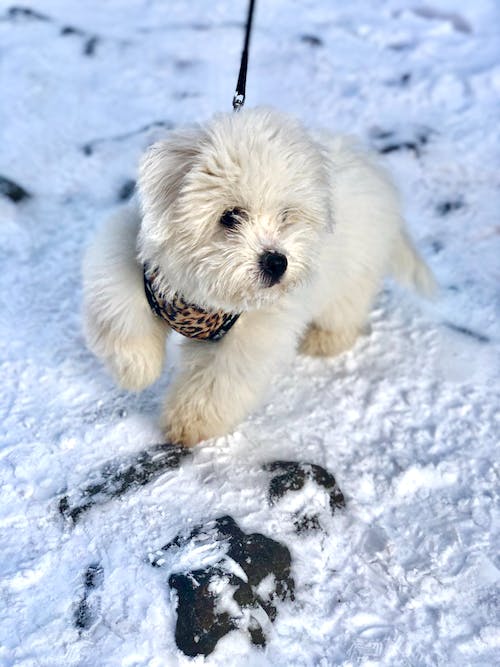Winter can be a time for fun and laughter, playing in the snow and enjoying the chill in the air but when those temperatures begin to drop sharply it’s important to keep everyone safe. If you’re like most pet owners then you probably make the mistake of assuming that your dog’s thick fur is all the protection they need from the bitter cold, but that’s not true. Despite this layer of insulation, dogs are still just as vulnerable to frostbite as we are. As a concerned owner, it’s important to understand what you can do to keep your pet safe on the coldest of days.
Protect Your Dog From Frostbite With Some Easy Steps
The easiest way to avoid damage from the cold is by shortening the amount of time spent outdoors. Keep walks to a minimum and opt for safer indoor exercise and play time instead. If you do have to go out, protecting your pet is a matter of common sense. Areas that lack fur, like the paw pads, leave the skin exposed to the elements. A thin layer of petroleum jelly can help keep the sensitive skin of paw pads healthy and safe. You might also want to consider a set of booties to provide a barrier between your dog’s paws and icy surfaces. It may take a little while for your dog to get used to wearing booties, so be patient and don’t force the issue.
Despite what you might think, paws aren’t the only thing that need protecting. While it may seem that their fur would provide adequate insulation against the cold, that’s not always the case. A well-fitting dog coat or sweater can be a perfect addition on cold days to create an extra layer of warmth. Just like you put on a sweater and a coat before going out, why not do the same for your pup to help keep them comfortable and safe?
If your dog spends a lot of time outdoors during cold weather make sure they have a safe, insulated shelter for warmth and protection. It should be elevated off the ground and have warm bedding, either straw or blankets will do. Also make sure that it’s small enough to help them conserve body heat.
When you do come in from the cold, make sure you dry your pup off thoroughly as moisture can make the effects of cold weather worse. Pay particular attention to sensitive areas like paws and ears but be sure that all of their fur is completely dried. You might also want to check with your vet about adjusting their diet during the winter months. Adding extra calories can help them maintain body temperature more effectively and guard against developing frostbite.

No matter what you do, it’s important to be aware of and monitor for signs of frostbite, especially after your dog has been outside for any amount of time. Carefully inspect paws, ears and tail for any signs of frostbite including pale or bluish skin, coldness to the touch, pain, discomfort or swelling. If you notice any of these signs, get your dog to your veterinarian as quickly as possible. The sooner you can get treatment, the better your chances of avoiding more serious effects of frostbite like darker gray or black discoloration, blisters filled with fluid or blood or tissue death.
Winter can be a wonderful time to share with your furry best friend, but in order to really enjoy those beautiful winter days, everyone needs to stay safe. When you’re bundling up to keep warm, don’t forget to do the same for your dog so that you and they can both stay safe from frostbite.

